The Russian-Ukrainian war of 2022 is not just a major geopolitical event but also a geoeconomic turning point. Western sanctions are the toughest measures ever imposed against a state of Russia’s size and power.
In the space of less than three weeks, the United States and its allies have cut major Russian banks off from the global financial system; blocked the export of high-tech components in unison with Asian allies; seized the overseas assets of hundreds of wealthy oligarchs; revoked trade treaties with Moscow; banned Russian airlines from North Atlantic airspace: restricted Russian oil sales to the United States and United Kingdom; blocked all foreign investment in the Russian economy from their jurisdiction; and frozen $403 billion out of the $630 billion in foreign assets of the Central Bank of Russia.
The overall effect has been unprecedented, and a few weeks ago would have seemed unimaginable even to most experts: in all but its most vital products, the world’s eleventh-largest economy has now been decoupled from twenty-first-century globalization.
 How will these historic measures play out? Economic sanctions rarely succeed at achieving their goals. Western policymakers frequently assume that failures stem from weaknesses in sanctions design.
How will these historic measures play out? Economic sanctions rarely succeed at achieving their goals. Western policymakers frequently assume that failures stem from weaknesses in sanctions design.
Indeed, sanctions can be plagued by loopholes, lack of political will to implement them, or insufficient diplomatic agreement concerning enforcement. The implicit assumption is that stronger sanctions stand a better chance of succeeding.
Yet the Western economic containment of Russia is different. This is an unprecedented campaign to isolate a G-20 economy with a large hydrocarbon sector, a sophisticated military-industrial complex, and a diversified basket of commodity exports. As a result, Western sanctions face a different kind of problem.
The sanctions, in this case, could fail not because of their weakness but because of their great and unpredictable strength. Having grown accustomed to using sanctions against smaller countries at low cost, Western policymakers have only limited experience and understanding of the effects of truly severe measures against a major, globally connected economy. Existing fragilities in the world’s economic and financial structure mean that such sanctions have the potential to cause grave political and material fallout.
THE REAL SHOCK AND AWE
Just how severe the current sanctions against Russia are can be seen from their effects across the world. The immediate shock to the Russian economy is the most obvious. Economists expect Russian GDP to contract by at least 9–15 percent this year, but the damage could well become much more severe.
The ruble has fallen more than a third since the beginning of January. An exodus of skilled Russian professionals is underway, while the capacity to import consumer goods and valuable technology has fallen drastically. As Russian political scientist Ilya Matveev has put it, “30 years of economic development thrown into the bin.”
The ramifications of the Western sanctions go far beyond these effects on Russia itself. There are at least four different kinds of broader effects: spillover effects into adjacent countries and markets; multiplier effects through private-sector divestment; escalation effects in the form of Russian responses; and systemic effects on the global economy.
Spillover effects have already caused turmoil in international commodities markets. A generalized panic erupted among traders after the second Western sanctions package—including the SWIFT cutoff and the freezing of central bank reserves—was announced on February 26.
Prices of crude oil, natural gas, wheat, copper, nickel, aluminum, fertilizers, and gold have soared. Because the war has closed Ukrainian ports and international firms are shunning Russian commodity exports, a grain and metals shortage now looms over the global economy.
Although oil prices have since dropped in anticipation of additional output from Gulf producers, the price shock to energy and commodities across the board will push global inflation higher. African and Asian countries reliant on food and energy imports are already experiencing difficulties.
Economists expect Russian GDP to contract by at least 9 to 15 percent this year.
Central Asia’s economies are also caught up in the sanctions shock. These former Soviet states are strongly connected to the Russian economy through trade and outward labor migration. The collapse of the ruble has caused serious financial distress in the region.
Kazakhstan has imposed exchange controls after the tenge, its currency, fell by 20 percent in the wake of the Western sanctions against Moscow; Tajikistan’s somoni has undergone a similarly steep depreciation. Russia’s impending impoverishment will force millions of Central Asian migrant workers to seek employment elsewhere and dry up the flow of remittances to their home countries.
The impact of the sanctions goes beyond decisions taken by G-7 and EU governments. The official sanctions packages have had a catalyzing effect on international businesses operating in Russia. Virtually overnight, Russia’s impending isolation has set in motion a massive corporate flight.
In what amounts to a vast private sector boycott, hundreds of major Western firms in the technology, oil and gas, aerospace, car, manufacturing, consumer goods, food and beverage, accounting and financial, and transport industries are pulling out of the country.
It is noteworthy that these departures are in many cases not required by sanctions. Instead, they are driven by moral condemnation, reputational concerns, and outright panic. As a result, the business retreat is deepening the economic shock to Russia by multiplying the negative economic effects of official state sanctions.
The Russian government has responded to the sanctions in several ways. It has undertaken emergency stabilization policies to protect foreign exchange earnings and shore up the ruble. Foreign portfolio capital is being locked into the country.
While the stock market has remained closed, the assets of many Western firms that have departed may soon face confiscation. The Ministry of Economic Development has prepared a law that grants the Russian state six months to take over businesses in case of an “ungrounded” liquidation or bankruptcy.
The potential nationalization of Western capital is not the only escalatory effect of the sanctions. On March 9, Putin signed an order restricting Russian commodity exports. Although the full array of items to be withheld under the ban is not yet clear, the threat of its use will continue to hang over international trade.
Russian restrictions on fertilizer exports imposed in early February have already put pressure on global food production. Russia could retaliate by restricting exports of important minerals such as nickel, palladium, and industrial sapphires. These are crucial inputs for the production of electrical batteries, catalytic converters, phones, ball bearings, light tubes, and microchips.
In the globalized assemblage system, even small changes in materials prices can massively raise the production costs faced by final users downstream in the production chain. A Russian embargo or large export reduction of palladium, nickel, or sapphires would hit car and semiconductor manufacturers, a $3.4 trillion global industry.
If the economic war between the West and Russia continues further into 2022 at this intensity, it is very possible that the world will slide into a sanctions-induced recession.
MANAGING THE FALLOUT
The combination of spillover effects, negative multiplier effects, and escalation effects means that the sanctions against Russia will have an effect on the world economy like few previous sanctions regimes in history. Why was this great upheaval not anticipated?
One reason is that over the last few decades, U.S. policymakers have usually deployed sanctions against economies that were sufficiently modest in size for any significant adverse effects to be contained. The degree of integration into the world economy of North Korea, Syria, Venezuela, Myanmar, and Belarus was relatively modest and one-dimensional. Only the rollout of U.S. sanctions against Iran required special care to avoid upsetting the oil market.
In general, however, the assumption held that sanctions use was economically almost costless to the United States. This has meant that the macroeconomic and macrofinancial consequences of global sanctions are insufficiently understood.
To better grasp the choices to be made in the current economic sanctions against Russia, it is instructive to examine sanctions use in the 1930s, when democracies similarly attempted to use them to stop the aggression of large-sized autocratic economies such as Fascist Italy, imperial Japan, and Nazi Germany.
The crucial backdrop to these efforts was the Great Depression, which had weakened economies and inflamed nationalism around the world. When Italian dictator Benito Mussolini invaded Ethiopia in October 1935, the League of Nations implemented an international sanctions regime enforced by 52 countries. It was an impressive united response, similar to that on display in reaction to Russia’s invasion of Ukraine.
But the league sanctions came with real tradeoffs. Economic containment of Fascist Italy limited democracies’ ability to use sanctions against an aggressor who was more threatening still: Adolf Hitler.
As a major engine of export demand for smaller European economies, Germany was too large an economy to be isolated without severe commercial loss to the whole of Europe. Amid the fragile recovery from the Depression, simultaneously placing sanctions on both Italy and Germany—then the fourth- and seventh-largest economies in the world—was too costly for most democracies.
Hitler exploited this fear of overstretch and the international focus on Ethiopia by moving German troops into the demilitarized Rhineland in March 1936, advancing further toward war. German officials were aware of their commercial power, which they used to maneuver central European and Balkan economies into their political orbit.
The result was the creation of a continental, river-based bloc of vassal economies whose trade with Germany was harder for Western states to block with sanctions or a naval blockade.
The sanctions dilemmas of the 1930s show that aggressors should be confronted when they disrupt the international order. But it equally drives home the fact that the viability of sanctions, and the chances of their success, are always dependent on the global economic situation.
In unstable commercial and financial conditions, it will be necessary to prioritize among competing objectives and prepare thoroughly for unintended effects of all kinds. Using sanctions against very large economies will simply not be possible without compensatory policies that support the sanctioners’ economies and the rest of the world.
More intensive sanctions will inflict further damage to the world economy.
The Biden administration is aware of this problem, but its actions so far are inadequate to the scale of the problem. Washington has attempted to reduce strains in the oil market by a partial reconciliation with Iran and Venezuela.
Countering the spillover effects of sanctions against one leading petrostate may now require lifting sanctions on two smaller petrostates. But this oil diplomacy is insufficient to meet the challenge posed by the Russia sanctions, the effects of which are aggravating preexisting economic woes.
Supply chain issues and pandemic-era bottlenecks in global transport and production networks predated the war in Ukraine. The unprecedented use of sanctions in these already troubled conditions has made an already difficult situation worse.
The problem of managing the fallout of economic war is greater still in Europe. This is not only because the European Union has much stronger trade and energy links with Russia. It is also the result of the political economy of the eurozone as it has taken shape over the last two decades: with the exception of France, most of its economies follow a heavily trade-reliant, export-focused growth strategy.
This economic model requires foreign demand for exports while repressing wages and domestic demand. It is a structure that is very ill suited to the prolonged imposition of trade-reducing sanctions. Increasing EU-wide renewable energy investment and expanding public control in the energy sector, as French President Emmanuel Macron has announced, is one way to absorb this shock.
But there is also a need for income-boosting measures for consumer goods and price-dampening interventions in producer goods markets, from strategic reserve management to the excess profits taxes that are being rolled out in Spain and Italy.
Then there are the consequences of sanctions cause for the world economy at large, especially in the “global South.” Addressing these problems will pose a major macroeconomic challenge. It is therefore imperative for the G-7, the European Union, and the United States’ Asian partners to launch bold and coordinated action to stabilize global markets.
This can be done through targeted investment to clear up supply bottlenecks, generous international grants and loans to developing countries struggling to secure adequate food and energy supplies, and large-scale government funding for renewable energy capacity.
It will also have to involve subsidies, and perhaps even rationing and price controls, to protect the poorest from the destructive effects of surging food, energy, and commodity prices.
Such state intervention is the price to be paid for engaging in economic war. Inflicting material damage at the scale levelled against Russia simply cannot be pursued without an international policymaking shift that extends economic support to those affected by sanctions. Unless the material well-being of households is protected, political support for sanctions will crumble over time.
THE NEW INTERVENTIONISTS
Western policymakers thus face a serious decision. They must decide whether to uphold sanctions against Russia at their current strength or to impose further economic punishment on Putin. If the goal of the sanctions is to exert maximum pressure on Russia with minimal disruption to their own economies—and thus a manageable risk of domestic political backlash—then current levels of pressure may be the most that is politically feasible now.
At the moment, simply maintaining existing sanctions will require active compensatory policies. For Europe especially, neither laissez-faire economic policies nor fiscal fragmentation will be sustainable if the economic war persists. But if the West decides to step up the economic pressure on Russia further still, far-reaching economic interventions will become an absolute necessity.
More intensive sanctions will inflict further damage, not just to the sanctioners themselves but to the world economy at large. No matter how strong and justified the West’s resolve to stop Putin’s aggression is, policymakers must accept the material reality that an all-out economic offensive will introduce considerable new strains into the world economy.
An intensification of sanctions will cause a cascade of material shocks that will demand far-reaching stabilization efforts.And even with such rescue measures, the economic damage may well be serious, and the risks of strategic escalation willremain high.
For all these reasons, it remains vital to pursue diplomatic and economic paths that can end the conflict. Whatever the results of the war, the economic offensive against Russia has already exposed one important new reality: the era of costless, risk-free, and predictable sanctions is well and truly over.
 Two factors contribute potently to this assault on the lives of citizens. One, practically anyone over the age of 18 can bear arms in America, even military grade assault rifles, in public. Two, there are enough depressed and mentally deranged citizens in the US who will use the guns to cool their rage. So, we have almost week after week chilling reports of some mass shooting or other in a mall or school or any other crowded place. The USA has become no doubt, a crazy ‘never never land’ where a former President recently organised an armed attack on the Capitol. Could you believe your eyes as they witnessed the violent and shocking visuals on our TV screens with security men running for cover like hunted-down rats? Has killing become a national obsession in the US?
Two factors contribute potently to this assault on the lives of citizens. One, practically anyone over the age of 18 can bear arms in America, even military grade assault rifles, in public. Two, there are enough depressed and mentally deranged citizens in the US who will use the guns to cool their rage. So, we have almost week after week chilling reports of some mass shooting or other in a mall or school or any other crowded place. The USA has become no doubt, a crazy ‘never never land’ where a former President recently organised an armed attack on the Capitol. Could you believe your eyes as they witnessed the violent and shocking visuals on our TV screens with security men running for cover like hunted-down rats? Has killing become a national obsession in the US? 
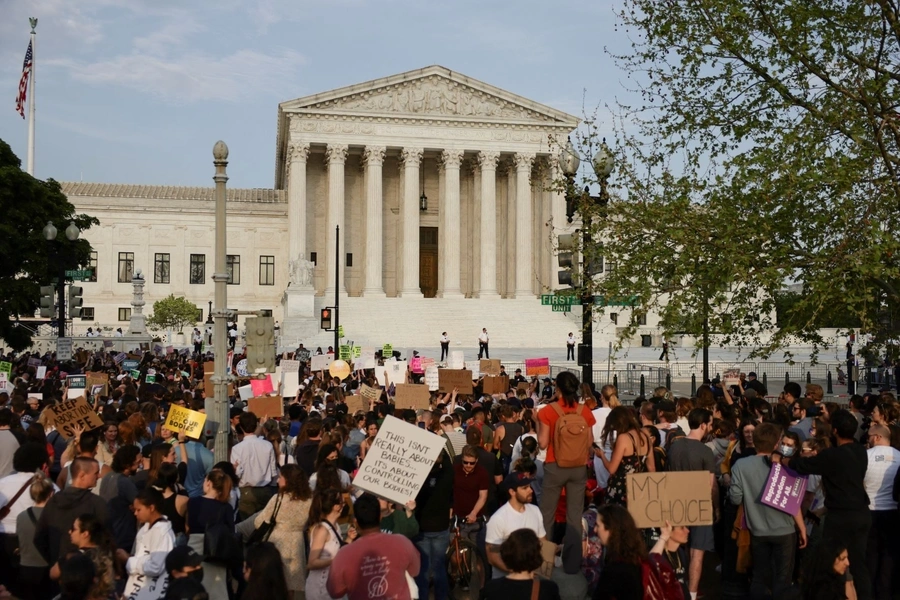 About eight-in-ten Democrats and Democratic-leaning independents (82%) disapprove of the court’s decision, including nearly two-thirds (66%) who strongly disapprove. Most Republicans and Republican leaners (70%) approve of the court’s ruling; 48% strongly approve.
About eight-in-ten Democrats and Democratic-leaning independents (82%) disapprove of the court’s decision, including nearly two-thirds (66%) who strongly disapprove. Most Republicans and Republican leaners (70%) approve of the court’s ruling; 48% strongly approve.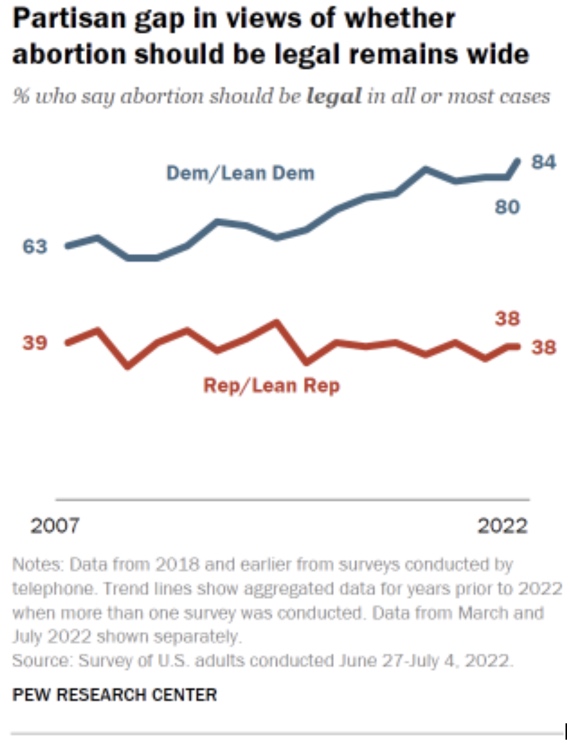 The partisan divide in abortion opinions remains wide. In the new survey, 84% of Democrats say abortion should be legal in all or most cases, compared with 38% of Republicans.
The partisan divide in abortion opinions remains wide. In the new survey, 84% of Democrats say abortion should be legal in all or most cases, compared with 38% of Republicans.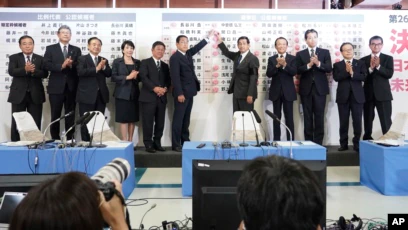 He returned to office in 2012, vowing to revitalize the nation and get its economy out of its deflationary doldrums with his “Abenomics” formula, which combines fiscal stimulus, monetary easing and structural reforms. He won six national elections and built a rock-solid grip on power.
He returned to office in 2012, vowing to revitalize the nation and get its economy out of its deflationary doldrums with his “Abenomics” formula, which combines fiscal stimulus, monetary easing and structural reforms. He won six national elections and built a rock-solid grip on power.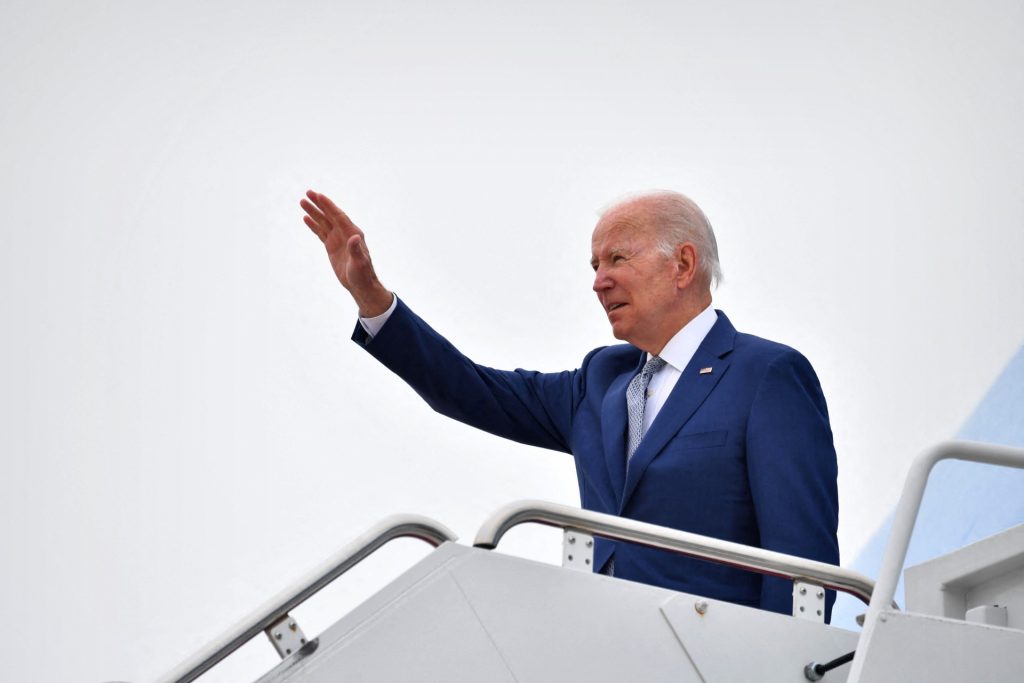
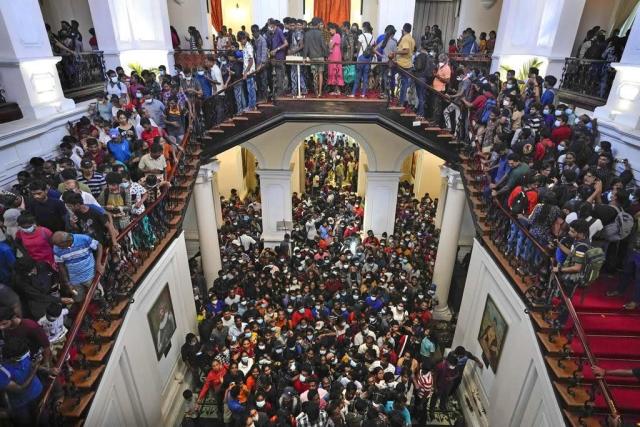 Soldiers were deployed around the city but troops simply watched from afar as crowds of people splashed in the pool of Rajapaksa’s sprawling residence, lounged on beds and took selfies of themselves on their cellphones to capture the moment. The chief of defense staff, Shavendra Silva, called for public support to maintain law and order.
Soldiers were deployed around the city but troops simply watched from afar as crowds of people splashed in the pool of Rajapaksa’s sprawling residence, lounged on beds and took selfies of themselves on their cellphones to capture the moment. The chief of defense staff, Shavendra Silva, called for public support to maintain law and order.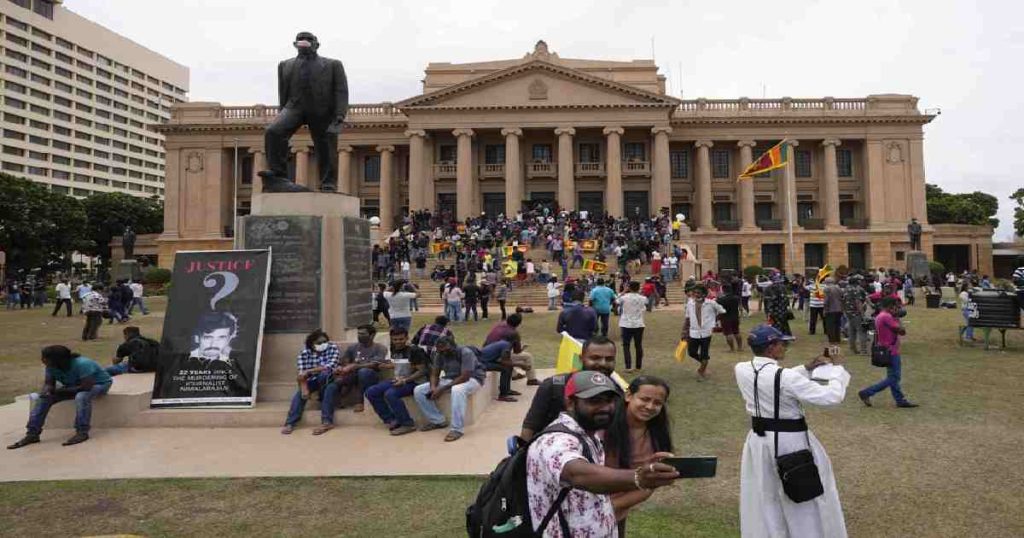 “This kind of unrest could create confusion among international organizations like the IMF and the World Bank,” political analyst Ranga Kalansooriya said, adding that a new administration should agree on a common program for economic recovery.
“This kind of unrest could create confusion among international organizations like the IMF and the World Bank,” political analyst Ranga Kalansooriya said, adding that a new administration should agree on a common program for economic recovery. 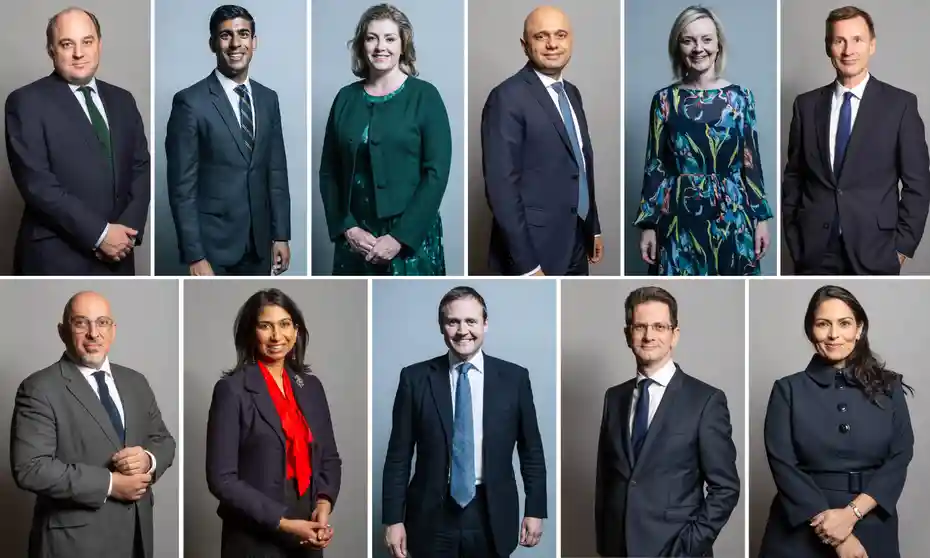 Johnson’s resignation came after Britain’s finance and health ministers resigned in quick succession on July 5, in moves that put the future of Prime Minister Boris Johnson in peril after a series of scandals that have damaged his administration.
Johnson’s resignation came after Britain’s finance and health ministers resigned in quick succession on July 5, in moves that put the future of Prime Minister Boris Johnson in peril after a series of scandals that have damaged his administration.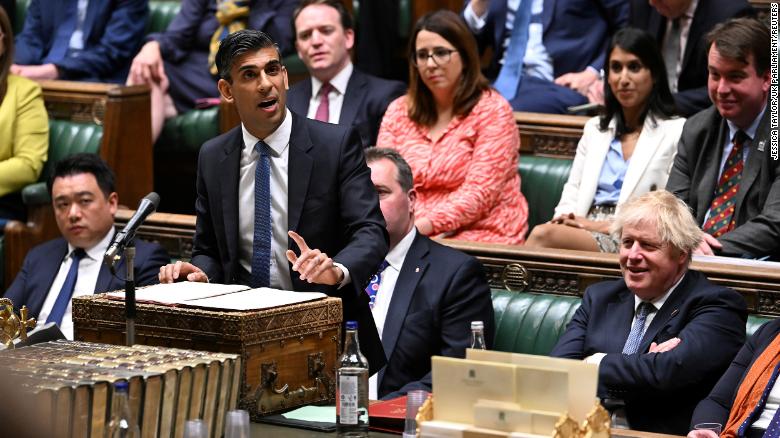
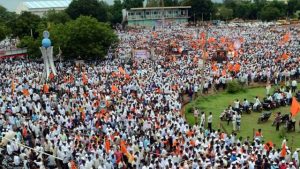 The report says about China that by 2030 there will be an urban population of 1.05 billion. Whereas the population of people living in cities in Asia will be 2.99 billion. In South Asia this number will be 98.76 million.
The report says about China that by 2030 there will be an urban population of 1.05 billion. Whereas the population of people living in cities in Asia will be 2.99 billion. In South Asia this number will be 98.76 million. 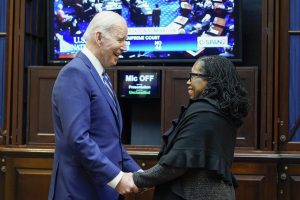 In April, she was
In April, she was 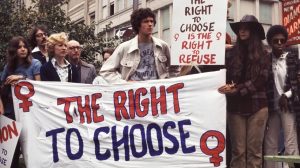 The change in interpretation may have been a change to the question of whether abortion constitutes a right guided by the U.S. Constitution. This question can be translated into the question of the relationship between basic human rights and abortion.
The change in interpretation may have been a change to the question of whether abortion constitutes a right guided by the U.S. Constitution. This question can be translated into the question of the relationship between basic human rights and abortion.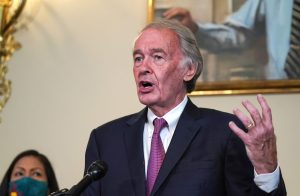 Senator Markey said the United States “must encourage the Indian government to fulfill its commitment to its own citizens the right of all individuals to practice and propagate religious [beliefs] enshrined in India’s constitution.” Senator Markey said it was “incumbent on the Indian government to uphold the principles of pluralism and secularism which are embedded in the Indian constitution.”
Senator Markey said the United States “must encourage the Indian government to fulfill its commitment to its own citizens the right of all individuals to practice and propagate religious [beliefs] enshrined in India’s constitution.” Senator Markey said it was “incumbent on the Indian government to uphold the principles of pluralism and secularism which are embedded in the Indian constitution.”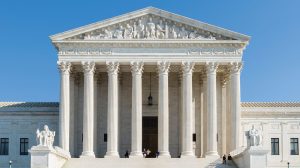 Before a historic series of rulings it was clear the Supreme Court, in its first full term with six conservative justices, was going to move to the right. It just wasn’t clear how far it would go or how fast.
Before a historic series of rulings it was clear the Supreme Court, in its first full term with six conservative justices, was going to move to the right. It just wasn’t clear how far it would go or how fast. 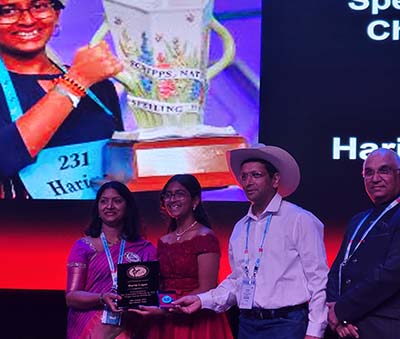 There was a sense of joy and relief on the faces of the over 1,000 physicians who have come together to celebrate their achievements, contributions, and to network and deepen their relationship even as the Covid Pandemic is waning and people are able to mingle freely and interact with one another cautiously.
There was a sense of joy and relief on the faces of the over 1,000 physicians who have come together to celebrate their achievements, contributions, and to network and deepen their relationship even as the Covid Pandemic is waning and people are able to mingle freely and interact with one another cautiously.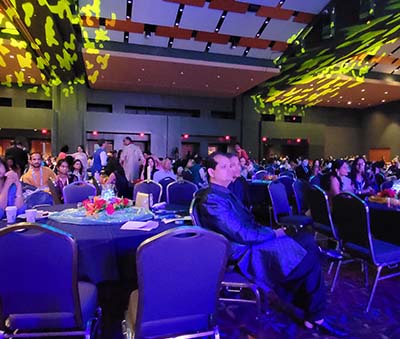 “Our physician members have worked very hard during the covid 19 pandemic. The 2022 convention is a perfect time to heal the healers with a special focus on wellness,” said Dr. Jayesh Shah, Chair of AAPI Convention 2022. Dr. Shah praised the dedication and generosity of each member for giving their best, to make this Convention truly a memorable one for every participant.
“Our physician members have worked very hard during the covid 19 pandemic. The 2022 convention is a perfect time to heal the healers with a special focus on wellness,” said Dr. Jayesh Shah, Chair of AAPI Convention 2022. Dr. Shah praised the dedication and generosity of each member for giving their best, to make this Convention truly a memorable one for every participant. Honoring India and its 75 years of Independence Day celebrations- co-sponsored by the Embassy of India & the Consulate General of India (CGI) – Houston, AAPI delegates had a rare glimpse to the rich cultural heritage of India through a video presentation depicting the unique diversity of India and a variety mesmerizing performance of Indian/Mexican Fusion Dances, ranging from Bharatnatyam, folk dances, and the traditional Indian dances in sync with Mexican pop dances, which were a treat to the hearts and souls of everyone. National Spieling Bee Champion 2022 Harini Logan was recognized during the convention Gala.
Honoring India and its 75 years of Independence Day celebrations- co-sponsored by the Embassy of India & the Consulate General of India (CGI) – Houston, AAPI delegates had a rare glimpse to the rich cultural heritage of India through a video presentation depicting the unique diversity of India and a variety mesmerizing performance of Indian/Mexican Fusion Dances, ranging from Bharatnatyam, folk dances, and the traditional Indian dances in sync with Mexican pop dances, which were a treat to the hearts and souls of everyone. National Spieling Bee Champion 2022 Harini Logan was recognized during the convention Gala. The convention is focused on themes such as how to take care of self and find satisfaction and happiness in the challenging situations they are in, while serving hundreds of patients everyday of their dedicated and noble profession.
The convention is focused on themes such as how to take care of self and find satisfaction and happiness in the challenging situations they are in, while serving hundreds of patients everyday of their dedicated and noble profession.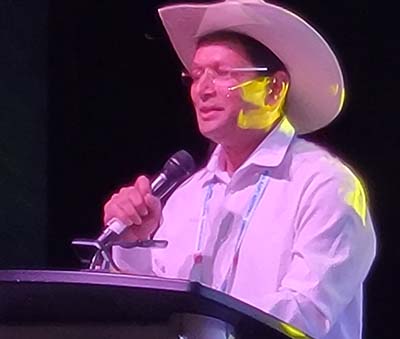 Some of the major events at the convention include: Workshops and hands-on sessions on well-being, 10-12 hours of CMEs, Women’s Forum, CEOs Forum, AAPI Got Talent, Mehfil, Bollywood Nite, Fashion Show, Medical Jeopardy, Poster/Research Contest, Alumni and Young Physicians events and Exhibition and Sale of Jewelry, Clothing, Medical Equipment, Pharma, Finance and many more.
Some of the major events at the convention include: Workshops and hands-on sessions on well-being, 10-12 hours of CMEs, Women’s Forum, CEOs Forum, AAPI Got Talent, Mehfil, Bollywood Nite, Fashion Show, Medical Jeopardy, Poster/Research Contest, Alumni and Young Physicians events and Exhibition and Sale of Jewelry, Clothing, Medical Equipment, Pharma, Finance and many more.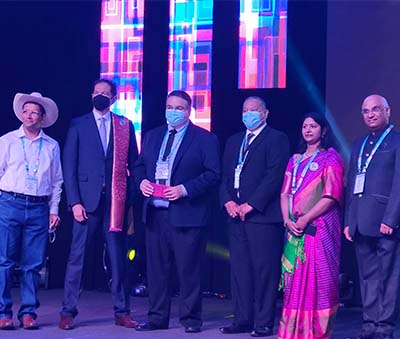 “Welcome to my home city, San Antonio and thank you for coming here to the annual convention offering extensive academic presentations, recognition of achievements and achievers, and professional networking at the alumni and evening social events,” Dr. Gotimukula added. For more details, please visit:
“Welcome to my home city, San Antonio and thank you for coming here to the annual convention offering extensive academic presentations, recognition of achievements and achievers, and professional networking at the alumni and evening social events,” Dr. Gotimukula added. For more details, please visit: 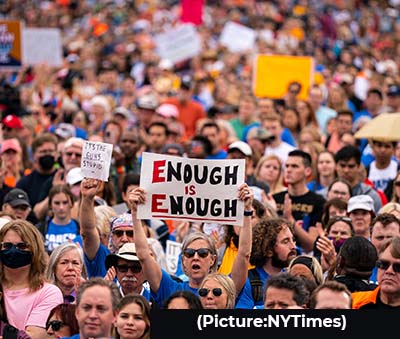 The agreement has the support of at least 20 senators, including the support of 10 Republican senators, who worked closely over the past several weeks to find the areas of common ground that could pass the closely divided Senate. The agreement is significant given how divided lawmakers have been over the gun issue, but the actual legislative text is not yet written.
The agreement has the support of at least 20 senators, including the support of 10 Republican senators, who worked closely over the past several weeks to find the areas of common ground that could pass the closely divided Senate. The agreement is significant given how divided lawmakers have been over the gun issue, but the actual legislative text is not yet written.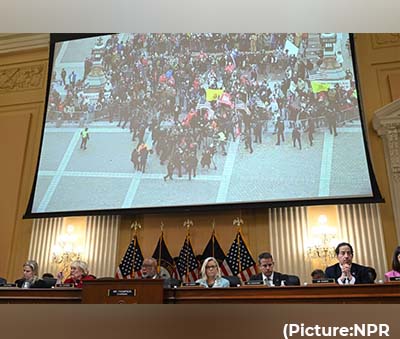 Instead, his lawyer gave a statement on his behalf and Mr Stepien’s previous private testimony was publicly played by the Democratic-led US House of Representatives select committee.
Instead, his lawyer gave a statement on his behalf and Mr Stepien’s previous private testimony was publicly played by the Democratic-led US House of Representatives select committee.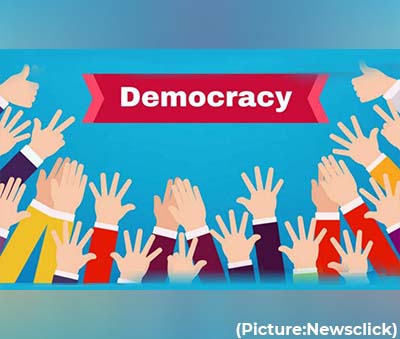 This article is adapted from The Paradox of Democracy: Free Speech, Open Media, and Perilous Persuasion by Zac Gershberg and Sean Illing (University of Chicago Press, 320 pp., $30, June 2022).
This article is adapted from The Paradox of Democracy: Free Speech, Open Media, and Perilous Persuasion by Zac Gershberg and Sean Illing (University of Chicago Press, 320 pp., $30, June 2022).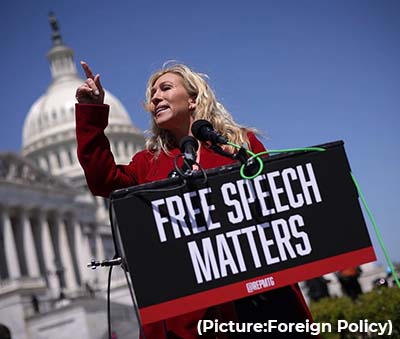 But the right to say anything opened the door to all manners of subversion, and this has been a challenge to every democracy that has ever existed. The emergence of isegoria in Athens, for instance, was accompanied by the joint rituals of ostracism and tribalism. In today’s language, you might say that Socrates was the first notable citizen to be “canceled” by the same democratic forces that made his speech free in the first place. This is the defining tension of any democratic society.
But the right to say anything opened the door to all manners of subversion, and this has been a challenge to every democracy that has ever existed. The emergence of isegoria in Athens, for instance, was accompanied by the joint rituals of ostracism and tribalism. In today’s language, you might say that Socrates was the first notable citizen to be “canceled” by the same democratic forces that made his speech free in the first place. This is the defining tension of any democratic society.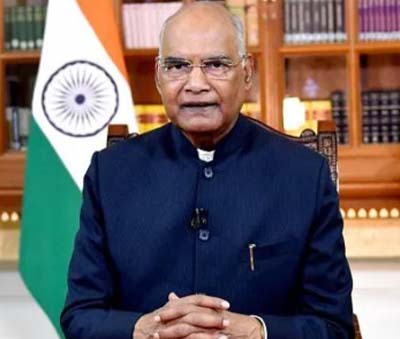 So the role is more akin to that of the British monarch or monarchs in countries like the Netherlands or Spain: a referee over a parliamentary system where ministers possess the real power. Countries like Germany and Israel have presidencies similar to India’s.
So the role is more akin to that of the British monarch or monarchs in countries like the Netherlands or Spain: a referee over a parliamentary system where ministers possess the real power. Countries like Germany and Israel have presidencies similar to India’s.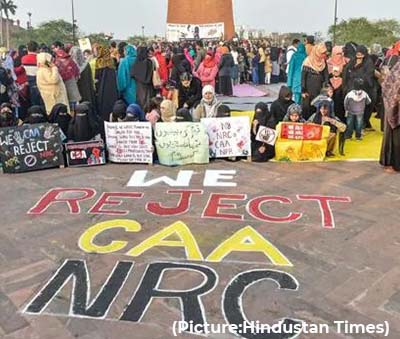 When one of my cousins in Mumbai attended a Catholic school in the 1970s and 1980s, his circle of friends included people of numerous religions — Hindus, Muslims and Parsis, among others. They would go to each other’s homes and to each other’s houses of worship — even to pray, if there was an exam coming up!
When one of my cousins in Mumbai attended a Catholic school in the 1970s and 1980s, his circle of friends included people of numerous religions — Hindus, Muslims and Parsis, among others. They would go to each other’s homes and to each other’s houses of worship — even to pray, if there was an exam coming up!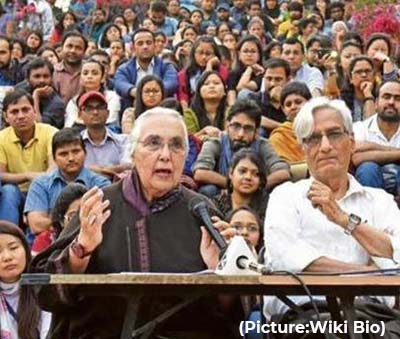 In short, if you’re someone in the Hindu diaspora who has economic or social power and you don’t speak up against state-sanctioned violence and discrimination in India, you might as well be participating in it. If you’re against discrimination here, then you’ve got to be against discrimination there.
In short, if you’re someone in the Hindu diaspora who has economic or social power and you don’t speak up against state-sanctioned violence and discrimination in India, you might as well be participating in it. If you’re against discrimination here, then you’ve got to be against discrimination there.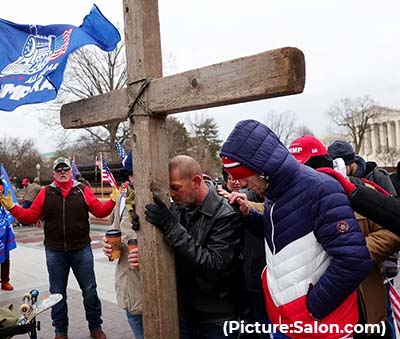 In retrospect, the “
In retrospect, the “ Seven destination countries attract half of those wanting to migrate to another country. The top destination country at 21 percent of those wanting to migrate is the United States. Substantially lower, Canada and Germany are next at 6 percent, followed by France and Australia at 5 percent, the United Kingdom at 4 percent, and Saudi Arabia at 3 percent
Seven destination countries attract half of those wanting to migrate to another country. The top destination country at 21 percent of those wanting to migrate is the United States. Substantially lower, Canada and Germany are next at 6 percent, followed by France and Australia at 5 percent, the United Kingdom at 4 percent, and Saudi Arabia at 3 percent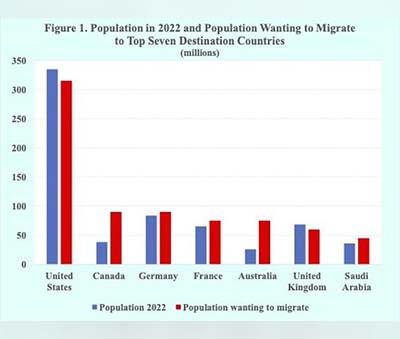
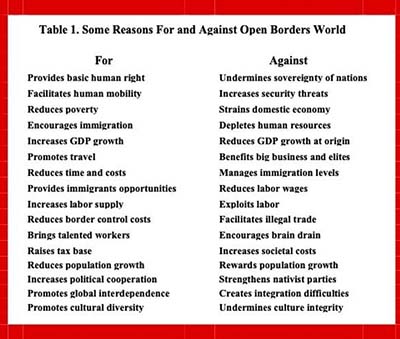
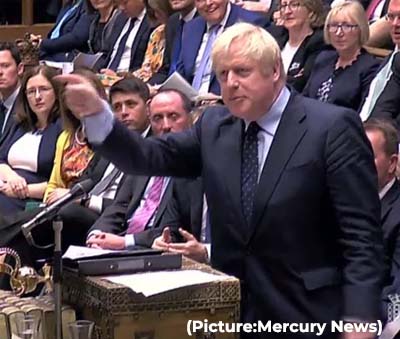 Boris Johnson, whose premiership has been engulfed in scandal for months after it emerged he attended illegal parties during lockdown — and who subsequently, became the first sitting UK Prime Minister to be found guilty of breaking the law — was able to appear at legitimate gatherings outside Buckingham Palace on Saturday and Sunday, enjoying a brief respite from the constant speculation about his job security.
Boris Johnson, whose premiership has been engulfed in scandal for months after it emerged he attended illegal parties during lockdown — and who subsequently, became the first sitting UK Prime Minister to be found guilty of breaking the law — was able to appear at legitimate gatherings outside Buckingham Palace on Saturday and Sunday, enjoying a brief respite from the constant speculation about his job security.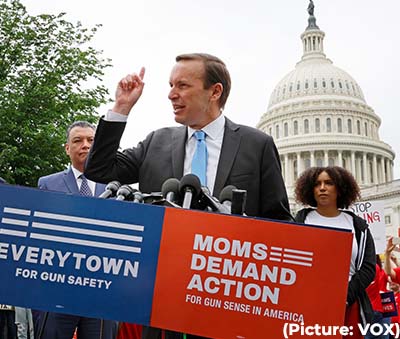 “Once again, we see lives lost and people injured in yet another horrendous, brazen and despicable act of gun violence,” Philadelphia Mayor Jim Kenney said in a statement on Sunday. In Chattanooga, Tenn., police responded early Sunday to a shooting near a nightclub. Three people were killed and 14 others were injured, according to police chief Celeste Murphy.
“Once again, we see lives lost and people injured in yet another horrendous, brazen and despicable act of gun violence,” Philadelphia Mayor Jim Kenney said in a statement on Sunday. In Chattanooga, Tenn., police responded early Sunday to a shooting near a nightclub. Three people were killed and 14 others were injured, according to police chief Celeste Murphy.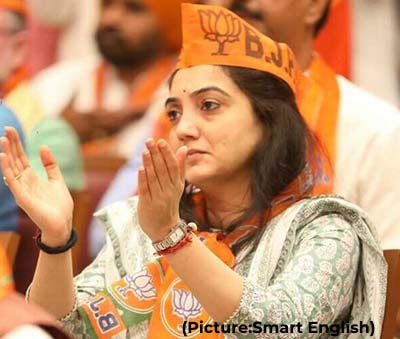 Modi’s party took no action against the two BJP leaders until Sunday, when a sudden chorus of diplomatic outrage began with Qatar and Kuwait summoning their Indian ambassadors to protest. The BJP suspended Sharma and expelled Jindal and issued a rare statement saying it “strongly denounces insult of any religious personalities,” a move that was welcomed by Qatar and Kuwait.
Modi’s party took no action against the two BJP leaders until Sunday, when a sudden chorus of diplomatic outrage began with Qatar and Kuwait summoning their Indian ambassadors to protest. The BJP suspended Sharma and expelled Jindal and issued a rare statement saying it “strongly denounces insult of any religious personalities,” a move that was welcomed by Qatar and Kuwait.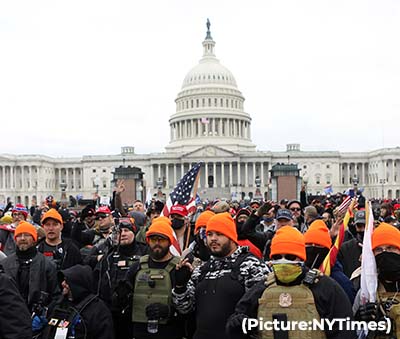 Proud Boy leader Enrique Tarrio wasn’t on the Capitol grounds during the insurrection, but prosecutors say he helped coordinate the violent effort to disrupt the electoral count that day. As the violence unfolded, Tarrio allegedly posted “Proud of my boys and my country” on social media.
Proud Boy leader Enrique Tarrio wasn’t on the Capitol grounds during the insurrection, but prosecutors say he helped coordinate the violent effort to disrupt the electoral count that day. As the violence unfolded, Tarrio allegedly posted “Proud of my boys and my country” on social media.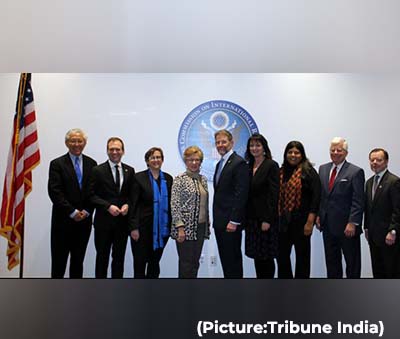 “From Jehovah’s Witnesses in Russia; Jews in Europe; Baha’is in Iran; Christians in North Korea, Nigeria and Saudi Arabia; Muslims in Burma and China; Catholics in Nicaragua; and atheists and humanists around the world, no community has been immune from these abuses,” he said.
“From Jehovah’s Witnesses in Russia; Jews in Europe; Baha’is in Iran; Christians in North Korea, Nigeria and Saudi Arabia; Muslims in Burma and China; Catholics in Nicaragua; and atheists and humanists around the world, no community has been immune from these abuses,” he said.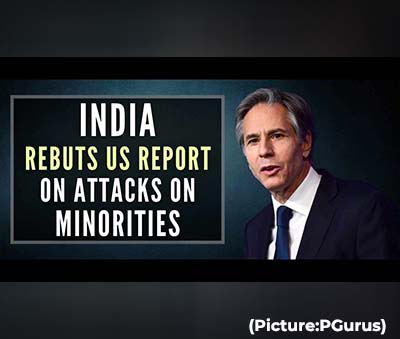 “We have noted the release of the US State Department 2021 Report on International Religious Freedom, and ill-informed comments by senior US officials. It is unfortunate that vote bank politics is being practiced in international relations. We would urge that assessments based on motivated inputs and biased views be avoided,” said foreign ministry spokesperson Arindam Bagchi.
“We have noted the release of the US State Department 2021 Report on International Religious Freedom, and ill-informed comments by senior US officials. It is unfortunate that vote bank politics is being practiced in international relations. We would urge that assessments based on motivated inputs and biased views be avoided,” said foreign ministry spokesperson Arindam Bagchi.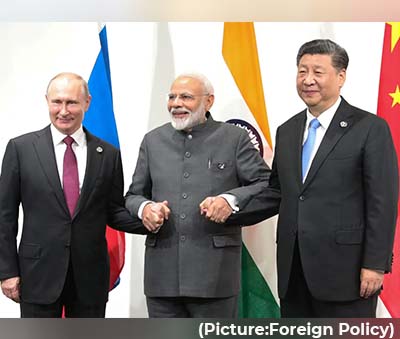 At the
At the 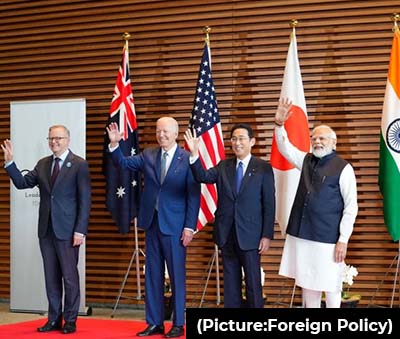 Over the last few months, India has also preserved its close ties to Russia by repeatedly
Over the last few months, India has also preserved its close ties to Russia by repeatedly 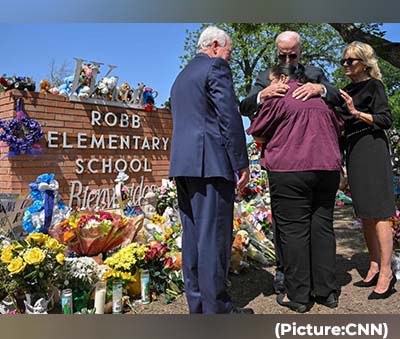 But there was only so much he could do as a president, he said. Major changes would need to be authorized by Congress, where a bipartisan group of lawmakers
But there was only so much he could do as a president, he said. Major changes would need to be authorized by Congress, where a bipartisan group of lawmakers 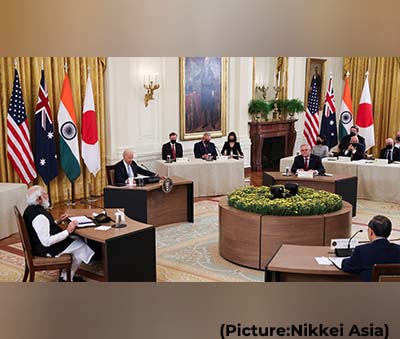 “We, the leaders of Australia, India, Japan, and the United States, convened today in person as “the Quad” for the first time. On this historic occasion we recommit to our partnership, and to a region that is a bedrock of our shared security and prosperity—a free and open Indo-Pacific, which is also inclusive and resilient.”
“We, the leaders of Australia, India, Japan, and the United States, convened today in person as “the Quad” for the first time. On this historic occasion we recommit to our partnership, and to a region that is a bedrock of our shared security and prosperity—a free and open Indo-Pacific, which is also inclusive and resilient.” The prospect of upsetting Washington should be particularly concerning for Indian policymakers. The United States has become one of New Delhi’s most important partners, particularly as India tries to stand up to Chinese aggression in the Himalayas. But although Washington is not happy that New Delhi has refused to condemn Russian aggression, Indian policymakers have calculated that their country is so central to U.S. efforts to counterbalance China that India will remain immune to a potential backlash. So far, they’ve been right; the United States has issued only muted criticisms of Indian neutrality. Yet Washington’s patience is not endless, and the longer Russia prosecutes its war without India changing its position, the more likely the United States will be to view India as an unreliable partner. It may not want to, but ultimately New Delhi will have to pick between Russia and the West.
The prospect of upsetting Washington should be particularly concerning for Indian policymakers. The United States has become one of New Delhi’s most important partners, particularly as India tries to stand up to Chinese aggression in the Himalayas. But although Washington is not happy that New Delhi has refused to condemn Russian aggression, Indian policymakers have calculated that their country is so central to U.S. efforts to counterbalance China that India will remain immune to a potential backlash. So far, they’ve been right; the United States has issued only muted criticisms of Indian neutrality. Yet Washington’s patience is not endless, and the longer Russia prosecutes its war without India changing its position, the more likely the United States will be to view India as an unreliable partner. It may not want to, but ultimately New Delhi will have to pick between Russia and the West.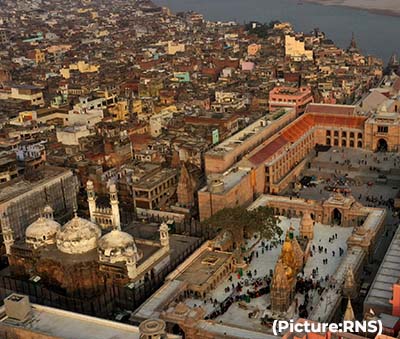 “The idea to bombard the courts with so many petitions is to keep the Muslims in check and the communal pot simmering,” said Nilanjan Mukhopadhyay, a political analyst and commentator. “It is a way to tell Muslims that their public display of faith in India is no more accepted and that the alleged humiliation heaped on them by Muslim rulers of the medieval past should be redressed now.”
“The idea to bombard the courts with so many petitions is to keep the Muslims in check and the communal pot simmering,” said Nilanjan Mukhopadhyay, a political analyst and commentator. “It is a way to tell Muslims that their public display of faith in India is no more accepted and that the alleged humiliation heaped on them by Muslim rulers of the medieval past should be redressed now.”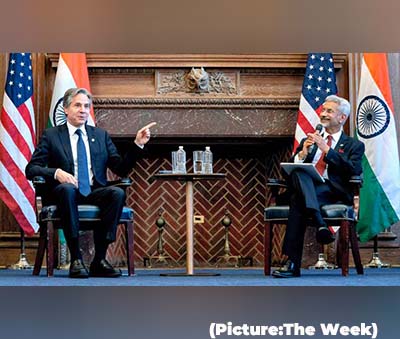 India’s trade deficit with China continued to grow, from $44 billion in 2020-21 to $72.91 billion in 2021-22. The US is, however, one of the few countries with which India has a trade surplus. In 2021-22, India recorded a positive trade balance of $32.8 billion with the US.
India’s trade deficit with China continued to grow, from $44 billion in 2020-21 to $72.91 billion in 2021-22. The US is, however, one of the few countries with which India has a trade surplus. In 2021-22, India recorded a positive trade balance of $32.8 billion with the US.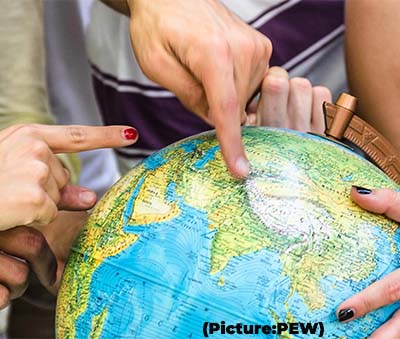 On average, Americans give more correct than incorrect answers to the 12 questions in the study. The mean number of correct answers is 6.3, while the median is 7. But the survey finds that levels of international knowledge vary based on who is answering. Americans with more education tend to score higher, for example, than those with less formal education. Men also tend to get more questions correct than women. Older Americans and those who are more interested in foreign policy also tend to perform better.
On average, Americans give more correct than incorrect answers to the 12 questions in the study. The mean number of correct answers is 6.3, while the median is 7. But the survey finds that levels of international knowledge vary based on who is answering. Americans with more education tend to score higher, for example, than those with less formal education. Men also tend to get more questions correct than women. Older Americans and those who are more interested in foreign policy also tend to perform better.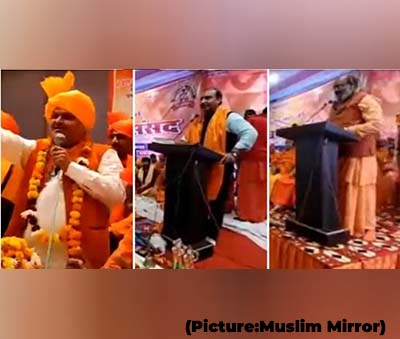 The Catholic Union has, with other Christian groups, already challenged in the Supreme Court the terrible laws that deny Dalit Christians the protection of Constitutional provisions as given to their counterparts professing Hindu, Sikh, and Buddhist religions as well as those not practicing any religion at all.
The Catholic Union has, with other Christian groups, already challenged in the Supreme Court the terrible laws that deny Dalit Christians the protection of Constitutional provisions as given to their counterparts professing Hindu, Sikh, and Buddhist religions as well as those not practicing any religion at all.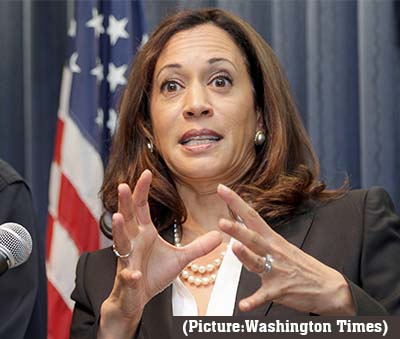 In her pre-recorded speech played on May 18, Harris recalled her mother’s work in cancer research and how she and her sister were taught to “Dream with Ambition,” by their mother.
In her pre-recorded speech played on May 18, Harris recalled her mother’s work in cancer research and how she and her sister were taught to “Dream with Ambition,” by their mother.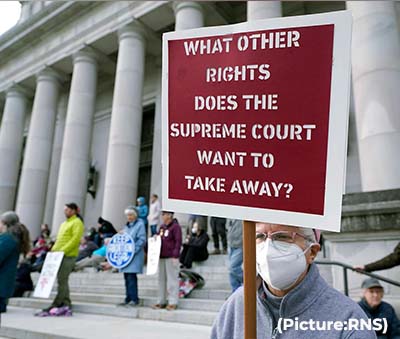 Shortly after the leak, the team surveyed potential voters again — 300 in all — to see how the news had affected candidate preference. Even before the leak, abortion was an important issue to most voters. The polls showed that abortion had, on average, a 30% weight in respondents’ candidate preference.
Shortly after the leak, the team surveyed potential voters again — 300 in all — to see how the news had affected candidate preference. Even before the leak, abortion was an important issue to most voters. The polls showed that abortion had, on average, a 30% weight in respondents’ candidate preference.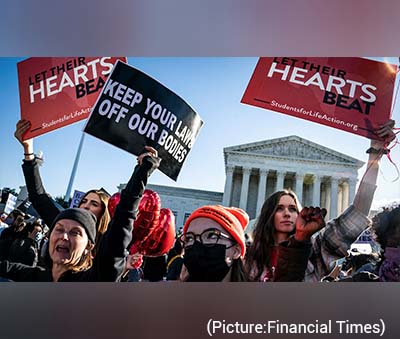 If the nation is divided on one of the most important cases that has been debated in the top Court, the justices who occupy the highest court are even more divided on the case and its implications for the millions of women who are impacted by the court that has once again proved to be a political organization, based on the ideologies of the Justices rather than the true spirit of the Constitution.
If the nation is divided on one of the most important cases that has been debated in the top Court, the justices who occupy the highest court are even more divided on the case and its implications for the millions of women who are impacted by the court that has once again proved to be a political organization, based on the ideologies of the Justices rather than the true spirit of the Constitution.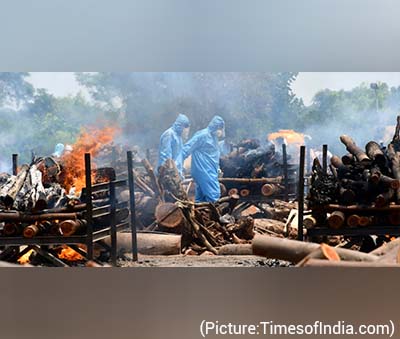 The gaps: 8% of all deaths in India are never registered, according to government data with just 20% of deaths being medically certified. In certain states like Bihar, Nagaland and Manipur, the registration of deaths with the civil registration system (CRS) is less than 50%. In fact, just one state — Goa — has a 100% record in registering all its deaths with the CRS. The Centre and the states, while dismissing WHO’s report, cited the death registration figures from the CRS to buttress their claims that India’s official Covid-19 fatality count is up to date.
The gaps: 8% of all deaths in India are never registered, according to government data with just 20% of deaths being medically certified. In certain states like Bihar, Nagaland and Manipur, the registration of deaths with the civil registration system (CRS) is less than 50%. In fact, just one state — Goa — has a 100% record in registering all its deaths with the CRS. The Centre and the states, while dismissing WHO’s report, cited the death registration figures from the CRS to buttress their claims that India’s official Covid-19 fatality count is up to date.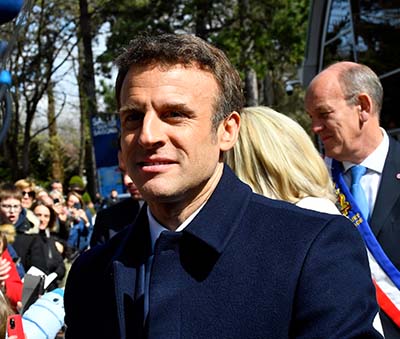 Boosted by his victory, Macron figures to be in the spotlight when he pays an expected visit to Berlin in the coming days to meet with new Chancellor Olaf Scholz, who has had a low-profile debut on the international stage. French presidents traditionally make their first post-election trip abroad to Germany as a celebration of the countries’ friendship after multiple wars.
Boosted by his victory, Macron figures to be in the spotlight when he pays an expected visit to Berlin in the coming days to meet with new Chancellor Olaf Scholz, who has had a low-profile debut on the international stage. French presidents traditionally make their first post-election trip abroad to Germany as a celebration of the countries’ friendship after multiple wars.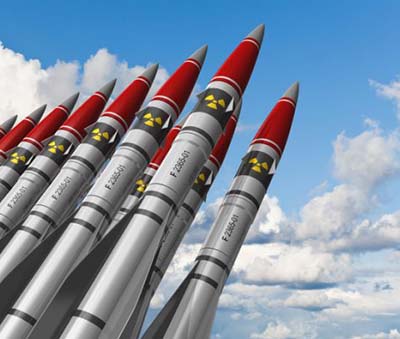 Advances in offensive capabilities have, however, been matched in increasingly sophisticated sensing, tracking and processing technologies designed to detect, prevent and in some cases respond to a nuclear strike – often using Artificial Intelligence (AI).
Advances in offensive capabilities have, however, been matched in increasingly sophisticated sensing, tracking and processing technologies designed to detect, prevent and in some cases respond to a nuclear strike – often using Artificial Intelligence (AI). Though the Indian side stated that it would demonstrate the same speed and urgency that it did in concluding recent FTAs with the UAE and Australia in recent months, yet nothing can’t be said for sure about an Indo-UK FTA, as there are many thorny issues on both sides.
Though the Indian side stated that it would demonstrate the same speed and urgency that it did in concluding recent FTAs with the UAE and Australia in recent months, yet nothing can’t be said for sure about an Indo-UK FTA, as there are many thorny issues on both sides. In 2021, the report said in its key findings, “The Indian government escalated its promotion and enforcement of policies — including those promoting a Hindu-nationalist agenda — that negatively affected Muslims, Christians, Sikhs, Dalits, and other religious minorities. The government continued to systemize its ideological vision of a Hindu state at both the national and state levels through the use of both existing and new laws and structural changes hostile to the country’s religious minorities”.
In 2021, the report said in its key findings, “The Indian government escalated its promotion and enforcement of policies — including those promoting a Hindu-nationalist agenda — that negatively affected Muslims, Christians, Sikhs, Dalits, and other religious minorities. The government continued to systemize its ideological vision of a Hindu state at both the national and state levels through the use of both existing and new laws and structural changes hostile to the country’s religious minorities”. The sprawling Azovstal site has been almost completely destroyed by Russian attacks, but it is the last pocket of organized Ukrainian resistance in Mariupol. An estimated 2,000 soldiers and 1,000 civilians are said to be holed up in fortified positions underneath the wrecked structures.
The sprawling Azovstal site has been almost completely destroyed by Russian attacks, but it is the last pocket of organized Ukrainian resistance in Mariupol. An estimated 2,000 soldiers and 1,000 civilians are said to be holed up in fortified positions underneath the wrecked structures. Professor Rohit Chopra, academic and author, drew attention to the infiltration of the Hindu supremacist ideology in all levels of the government, legacy media, and social media.
Professor Rohit Chopra, academic and author, drew attention to the infiltration of the Hindu supremacist ideology in all levels of the government, legacy media, and social media. Dr. Shivangi is of the opinion that “It is apt time India should think alternative suppliers source. What can be a better source than US? We have a great opportunity here as our Senior Senator from Mississippi has been elected as a Ranking member of the US Armed Service Committee of the US Senate. With his assistance and good offices, especially after 2+2 summit, I hope and look forward to such increased collaboration with the successful Indo pacific QUAD treaty.
Dr. Shivangi is of the opinion that “It is apt time India should think alternative suppliers source. What can be a better source than US? We have a great opportunity here as our Senior Senator from Mississippi has been elected as a Ranking member of the US Armed Service Committee of the US Senate. With his assistance and good offices, especially after 2+2 summit, I hope and look forward to such increased collaboration with the successful Indo pacific QUAD treaty.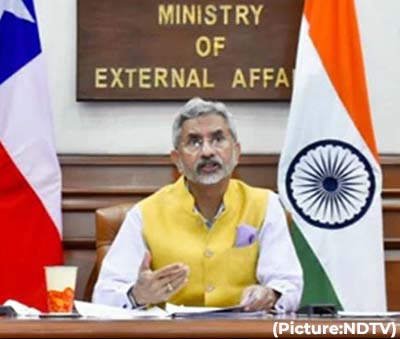 This reporter had asked if India was concerned over the growing diplomatic, military and economic ties between China and Russia. And in light of that concern, is India going to reduce its reliance on Russia economically and militarily?
This reporter had asked if India was concerned over the growing diplomatic, military and economic ties between China and Russia. And in light of that concern, is India going to reduce its reliance on Russia economically and militarily?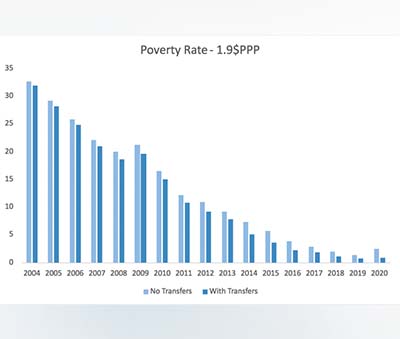 Source: NSS 2011-12 MMRP data; Private Final Consumption Expenditure (PFCE) growth rates for estimates of monthly per capita consumption; authors’ calculations.
Source: NSS 2011-12 MMRP data; Private Final Consumption Expenditure (PFCE) growth rates for estimates of monthly per capita consumption; authors’ calculations.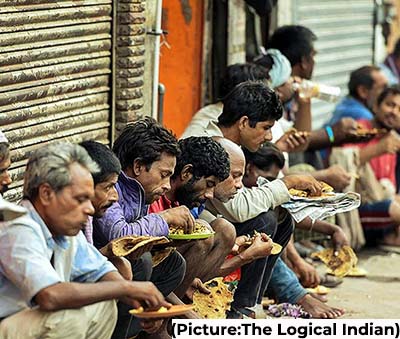 Our paper presents a consistent time series of poverty and (real) inequality in India for each of the years 2004-2020. Our estimate of real inequality (Figure 3) shows that consumption inequality has also declined, and in 2020 is very close to the lowest historical level of 0.28. Poverty and inequality trends can be emotive, controversial, and confusing. Consumption inequality is lower than income inequality, which itself is lower than wealth inequality. And each can show different trends. The levels and trends are different, and intermingled use should carry a warning about this when discussing “inequality.”
Our paper presents a consistent time series of poverty and (real) inequality in India for each of the years 2004-2020. Our estimate of real inequality (Figure 3) shows that consumption inequality has also declined, and in 2020 is very close to the lowest historical level of 0.28. Poverty and inequality trends can be emotive, controversial, and confusing. Consumption inequality is lower than income inequality, which itself is lower than wealth inequality. And each can show different trends. The levels and trends are different, and intermingled use should carry a warning about this when discussing “inequality.”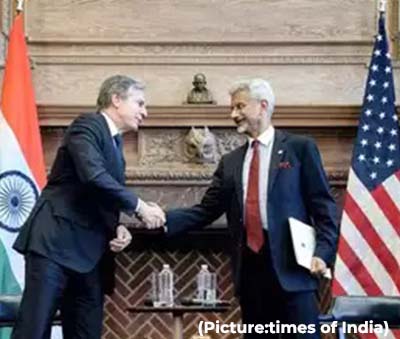 Near the end of the trip, Thurman met with Mahatma Gandhi. They talked, the books record, for about three hours, covering a wide range of issues: segregation, faith, nonviolent resistance. The conversation and the trip made a lasting impression on Thurman. So when he came back to Howard, he developed his interpretation of nonviolence – not as a political tactic, but as a spiritual lifestyle. He shared his views with sermons, speeches, and eventually what came to be an incredibly influential book, Jesus and the Disinherited.
Near the end of the trip, Thurman met with Mahatma Gandhi. They talked, the books record, for about three hours, covering a wide range of issues: segregation, faith, nonviolent resistance. The conversation and the trip made a lasting impression on Thurman. So when he came back to Howard, he developed his interpretation of nonviolence – not as a political tactic, but as a spiritual lifestyle. He shared his views with sermons, speeches, and eventually what came to be an incredibly influential book, Jesus and the Disinherited.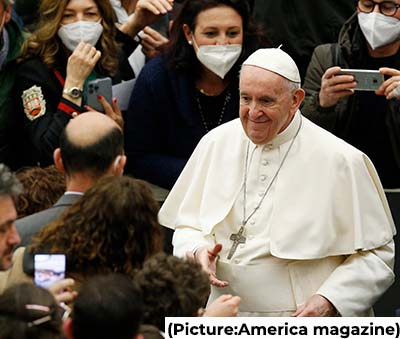 “Let us all commit ourselves to imploring peace, from our balconies and in our streets,″ Francis said. ”May the leaders of nations hear people’s plea for peace.”
“Let us all commit ourselves to imploring peace, from our balconies and in our streets,″ Francis said. ”May the leaders of nations hear people’s plea for peace.”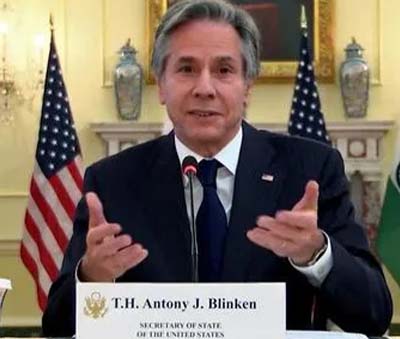 “What does Modi need to do to India’s Muslim population before we will stop considering them a partner in peace?” Omar, who belongs to President Joe Biden’s Democratic Party, said last week.
“What does Modi need to do to India’s Muslim population before we will stop considering them a partner in peace?” Omar, who belongs to President Joe Biden’s Democratic Party, said last week.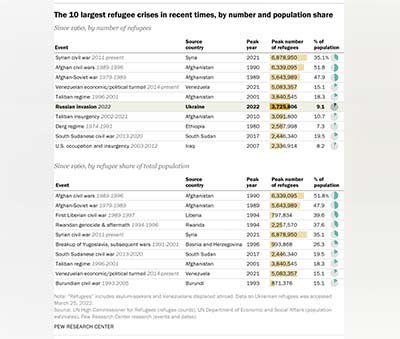 The Center examined all cases in the UNHCR’s database since 1960 where there were at least 500,000 refugees and similarly displaced people from a given country in a given year. The analysis doesn’t include “internally displaced persons” – those who have fled or been forced from their usual homes but haven’t yet crossed an international border. (Earlier this week, UNHCR head Filippo Grandi estimated that, all told,
The Center examined all cases in the UNHCR’s database since 1960 where there were at least 500,000 refugees and similarly displaced people from a given country in a given year. The analysis doesn’t include “internally displaced persons” – those who have fled or been forced from their usual homes but haven’t yet crossed an international border. (Earlier this week, UNHCR head Filippo Grandi estimated that, all told,  Evidently, the negation – talking about the opponent’s past and not their own present – is the core of the mobilization technique of the BJP and its supporters, which shifts the onus of evaluation from the present to the past.
Evidently, the negation – talking about the opponent’s past and not their own present – is the core of the mobilization technique of the BJP and its supporters, which shifts the onus of evaluation from the present to the past. There are racial and ethnic differences in college graduation patterns, as well as in the reasons for not completing a degree. Among adults ages 25 and older, 61% of Asian Americans have a bachelor’s degree or more education, along with 42% of White adults, 28% of Black adults and 21% of Hispanic adults, according to 2021
There are racial and ethnic differences in college graduation patterns, as well as in the reasons for not completing a degree. Among adults ages 25 and older, 61% of Asian Americans have a bachelor’s degree or more education, along with 42% of White adults, 28% of Black adults and 21% of Hispanic adults, according to 2021 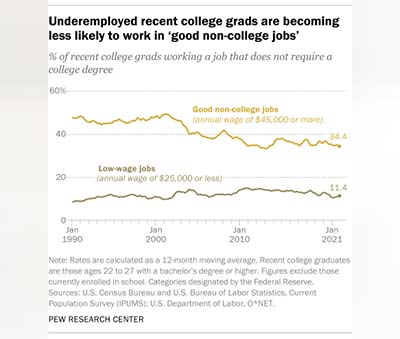 Only 62% of students who start a degree or certificate program finish their program within six years, according to the most recent data from the
Only 62% of students who start a degree or certificate program finish their program within six years, according to the most recent data from the 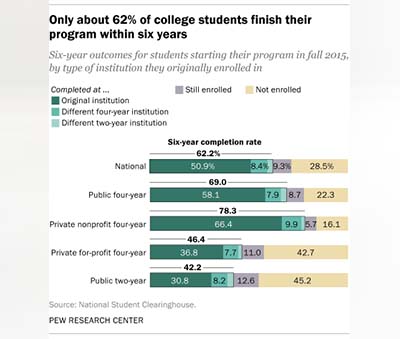 The unemployment rate is lower for college graduates than for workers without a bachelor’s degree, and that gap widened as a result of the coronavirus pandemic. In February 2020, just before the
The unemployment rate is lower for college graduates than for workers without a bachelor’s degree, and that gap widened as a result of the coronavirus pandemic. In February 2020, just before the  When it comes to income and wealth accumulation, first-generation college graduates lag substantially behind those with college-educated parents, according to a
When it comes to income and wealth accumulation, first-generation college graduates lag substantially behind those with college-educated parents, according to a 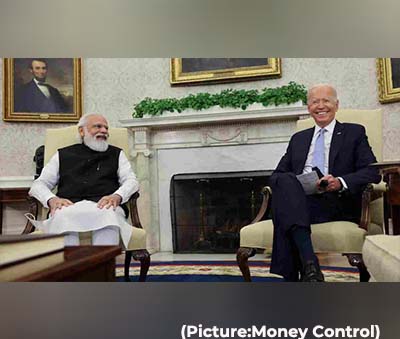 Biden told Modi during an hour-long video call Monday that the U.S. is ready to help India diversify its sources of energy, according to White House press secretary Jen Psaki. “The president also made clear that he doesn’t believe it’s in India’s interest to accelerate or increase imports of Russian energy or other commodities,” Psaki said.
Biden told Modi during an hour-long video call Monday that the U.S. is ready to help India diversify its sources of energy, according to White House press secretary Jen Psaki. “The president also made clear that he doesn’t believe it’s in India’s interest to accelerate or increase imports of Russian energy or other commodities,” Psaki said. Khan’s party also submitted papers nominating the former foreign minister as a candidate, saying their members of parliament would resign en masse should he lose, potentially creating the need for urgent by-elections for their seats. Khan, the first Pakistani prime minister to be ousted by a no confidence vote, had clung on for almost a week after a united opposition first tried to remove him.
Khan’s party also submitted papers nominating the former foreign minister as a candidate, saying their members of parliament would resign en masse should he lose, potentially creating the need for urgent by-elections for their seats. Khan, the first Pakistani prime minister to be ousted by a no confidence vote, had clung on for almost a week after a united opposition first tried to remove him.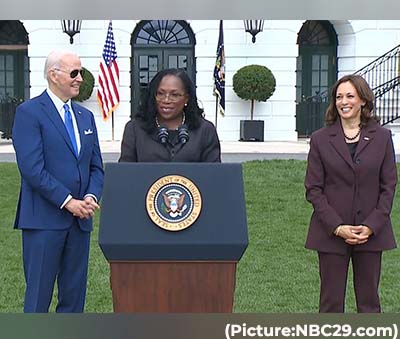 Biden administration from requiring large employers to have a workforce that is vaccinated against COVID-19 or be masked and tested; and left in place redrawn Alabama congressional districts that a lower court with two Trump appointees found shortchanged Black voters in violation of federal law.
Biden administration from requiring large employers to have a workforce that is vaccinated against COVID-19 or be masked and tested; and left in place redrawn Alabama congressional districts that a lower court with two Trump appointees found shortchanged Black voters in violation of federal law.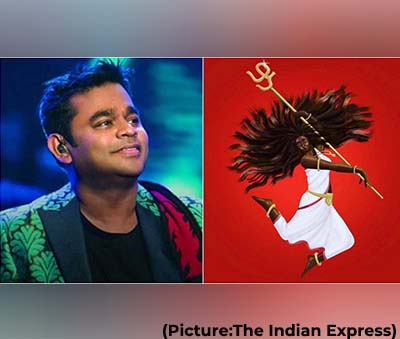 India’s multilingual Bollywood actor Prakash Raj has responded strongly to Union Home Minister Amit Shah’s recent remarks that Hindi should be accepted as an alternative to English. “Amit Shah ji, I want to know where do you want us to speak Hindi, learn Hindi,” asked the actor. The actor joins us on this episode of ‘Left, Right and Centre’.
India’s multilingual Bollywood actor Prakash Raj has responded strongly to Union Home Minister Amit Shah’s recent remarks that Hindi should be accepted as an alternative to English. “Amit Shah ji, I want to know where do you want us to speak Hindi, learn Hindi,” asked the actor. The actor joins us on this episode of ‘Left, Right and Centre’. India on Saturday
India on Saturday Do Ukrainians still have different views regarding politicians, economic development, and even the state of their foreign policy? Yes, absolutely, as any other democratic nation should.
Do Ukrainians still have different views regarding politicians, economic development, and even the state of their foreign policy? Yes, absolutely, as any other democratic nation should. While negative sentiment toward Russia has increased substantially among both Democrats and Republicans since 2020, Republicans’ views have changed more drastically. Around a third of Republicans and Republican leaners had a very unfavorable view of Russia in 2020, compared with 67% who now hold this view – a 35 percentage point increase. In the same period, the share of Democrats with a very negative view of Russia increased by 23 points. A small partisan gap in views of Russia remains, but Republicans and Democrats are not as divided on Russia as they once were.
While negative sentiment toward Russia has increased substantially among both Democrats and Republicans since 2020, Republicans’ views have changed more drastically. Around a third of Republicans and Republican leaners had a very unfavorable view of Russia in 2020, compared with 67% who now hold this view – a 35 percentage point increase. In the same period, the share of Democrats with a very negative view of Russia increased by 23 points. A small partisan gap in views of Russia remains, but Republicans and Democrats are not as divided on Russia as they once were. Americans of all ages tend to have favorable opinions of NATO overall, but those ages 65 and older are more likely to hold a favorable view of NATO than younger adults. Roughly three-quarters (73%) of older Americans have a positive opinion of the organization, compared with 64% of those ages 18 to 29. Eight-in-ten of those with a postgraduate degree express a favorable opinion of NATO – significantly more than the share with a bachelor’s degree (73%), some college (64%) or a high school degree or less (59%).
Americans of all ages tend to have favorable opinions of NATO overall, but those ages 65 and older are more likely to hold a favorable view of NATO than younger adults. Roughly three-quarters (73%) of older Americans have a positive opinion of the organization, compared with 64% of those ages 18 to 29. Eight-in-ten of those with a postgraduate degree express a favorable opinion of NATO – significantly more than the share with a bachelor’s degree (73%), some college (64%) or a high school degree or less (59%). If Hindu unity is a facade, it also follows that the Hindu-Muslim binary, while a common framing for the discussion of Indian politics, cannot be as straightforward as it appears.
If Hindu unity is a facade, it also follows that the Hindu-Muslim binary, while a common framing for the discussion of Indian politics, cannot be as straightforward as it appears. Some countries tried to expel South Africa, which was one of the 51 founding members of the United Nations in 1945, because of its policy of apartheid, but the three permanent members of the Security Council – France, UK, and US – used their veto power to block that move.
Some countries tried to expel South Africa, which was one of the 51 founding members of the United Nations in 1945, because of its policy of apartheid, but the three permanent members of the Security Council – France, UK, and US – used their veto power to block that move. “However, analysts of all stripes are not as confident in a Macron victory as they were merely a week ago. In 2017, Le Pen lost to Macron by 34 percentage points. Now, polls on the second-round place her at 46% versus Macron at 54%. This is close enough to elicit worry.
“However, analysts of all stripes are not as confident in a Macron victory as they were merely a week ago. In 2017, Le Pen lost to Macron by 34 percentage points. Now, polls on the second-round place her at 46% versus Macron at 54%. This is close enough to elicit worry. 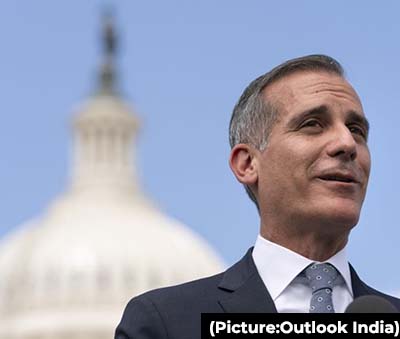 Politico reported last week that “As the US Senate considered making Garcetti emissary to the world’s biggest democracy, the consternation was initially confined to the GOP: Republican Iowa Sens. Joni Ernst and Chuck Grassley both placed holds on Garcetti’s nomination last month over allegations that Garcetti knew of sexual misconduct in his office, when he was the mayor of Los Angeles.
Politico reported last week that “As the US Senate considered making Garcetti emissary to the world’s biggest democracy, the consternation was initially confined to the GOP: Republican Iowa Sens. Joni Ernst and Chuck Grassley both placed holds on Garcetti’s nomination last month over allegations that Garcetti knew of sexual misconduct in his office, when he was the mayor of Los Angeles.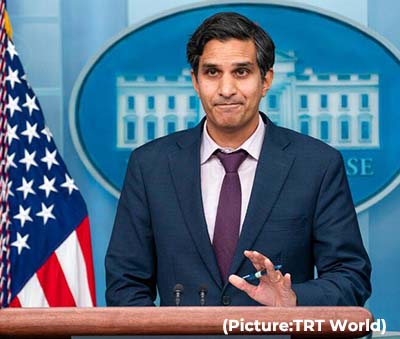 There will be consequences for countries looking to circumvent the US sanctions against Russia, the US warned even as Russian foreign minister Sergey Lavrov arrived in India last week on March 31st. Visiting US deputy NSA Daleep Singh, who was in India and is leading US efforts to sanction Russia, didn’t specify the consequences but said these were part of private discussions and the US would not like to see any country attempting to take advantage of the current situation.
There will be consequences for countries looking to circumvent the US sanctions against Russia, the US warned even as Russian foreign minister Sergey Lavrov arrived in India last week on March 31st. Visiting US deputy NSA Daleep Singh, who was in India and is leading US efforts to sanction Russia, didn’t specify the consequences but said these were part of private discussions and the US would not like to see any country attempting to take advantage of the current situation. Less than a day from a no-confidence vote that will almost certainly remove him from office, Prime Minister Imran Khan of Pakistan said that he would not accept the result of the vote, dismissing it as part of an American conspiracy against him and setting the stage for the country’s political crisis to drag on far beyond Sunday, as Khan fights to remain in politics, New York Timers reported.
Less than a day from a no-confidence vote that will almost certainly remove him from office, Prime Minister Imran Khan of Pakistan said that he would not accept the result of the vote, dismissing it as part of an American conspiracy against him and setting the stage for the country’s political crisis to drag on far beyond Sunday, as Khan fights to remain in politics, New York Timers reported.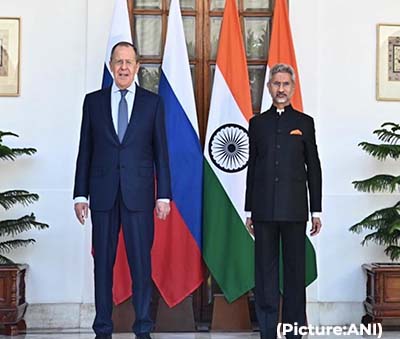 “India, as you are aware, has always been in favor of resolving differences and disputes through dialogue and diplomacy. In our meeting today, we will have an opportunity to discuss contemporary issues and concerns in some detail. I look forward to our discussions,” the External Affairs Minister said.
“India, as you are aware, has always been in favor of resolving differences and disputes through dialogue and diplomacy. In our meeting today, we will have an opportunity to discuss contemporary issues and concerns in some detail. I look forward to our discussions,” the External Affairs Minister said.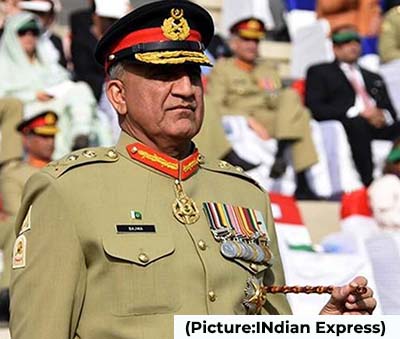 His proposal for peace with India had a wider meaning as he indirectly suggested to have some sort of trilateral dialogue involving India, Pakistan and China to create an inclusive peace, as he said that apart from the Kashmir dispute, the India-China border dispute is also a matter of great concern for Pakistan and “we want it to be settled quickly through dialogue and diplomacy.” “I believe it is time for the political leadership of the region to rise above their emotional and perceptual biases and break the shackles of history to bring peace and prosperity to almost three billion people of the region,” Gen. Bajwa said.
His proposal for peace with India had a wider meaning as he indirectly suggested to have some sort of trilateral dialogue involving India, Pakistan and China to create an inclusive peace, as he said that apart from the Kashmir dispute, the India-China border dispute is also a matter of great concern for Pakistan and “we want it to be settled quickly through dialogue and diplomacy.” “I believe it is time for the political leadership of the region to rise above their emotional and perceptual biases and break the shackles of history to bring peace and prosperity to almost three billion people of the region,” Gen. Bajwa said.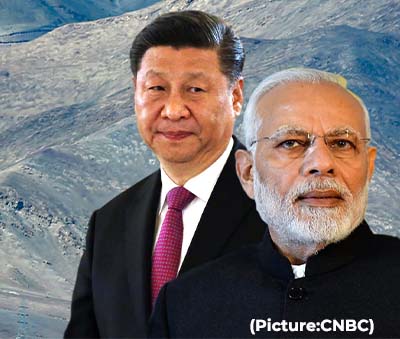 At one end, this has included delegations from the United States, Australia and Japan, the three nations which are India’s partners in the Quad, officially known as the Quadrilateral Security Dialogue.
At one end, this has included delegations from the United States, Australia and Japan, the three nations which are India’s partners in the Quad, officially known as the Quadrilateral Security Dialogue. How will these historic measures play out? Economic sanctions rarely succeed at achieving their goals. Western policymakers frequently assume that failures stem from weaknesses in sanctions design.
How will these historic measures play out? Economic sanctions rarely succeed at achieving their goals. Western policymakers frequently assume that failures stem from weaknesses in sanctions design.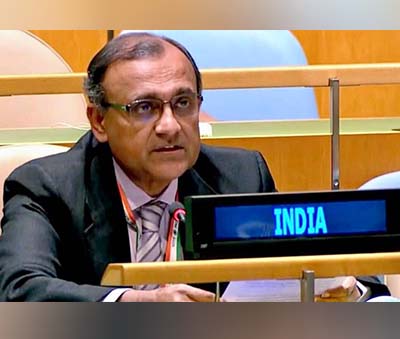 Earlier this week, US President Joe Biden has said that among the Quad countries, India was “somewhat shaky” in terms of showing its opposition to the Russian invasion of Ukraine.
Earlier this week, US President Joe Biden has said that among the Quad countries, India was “somewhat shaky” in terms of showing its opposition to the Russian invasion of Ukraine. US state department spokesperson Ned Price said notwithstanding India’s historic relationship with Russia, which came together at a time when the US was not prepared to have such kind of a relationship with India, now the US is a partner of India.
US state department spokesperson Ned Price said notwithstanding India’s historic relationship with Russia, which came together at a time when the US was not prepared to have such kind of a relationship with India, now the US is a partner of India. 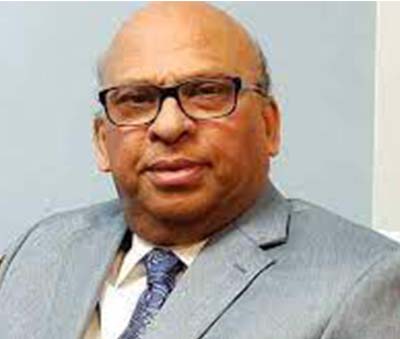 Till now China was UAE’s largest market. With the new agreement, India will step into that place. This agreement is particularly important at a time when India is taking a strong stance against Chinese products. It is heartening to note that the UAE has not taken into consideration Pakistan which is trying to gain a better foothold there than India on considerations like religion. The agreement aims at encouraging, rejuvenating and generally improving sectors like economy, energy, weather forecasting, technology, education, food safety, health, defense and security. With the signing of the agreement, the import duties on various products will come down.
Till now China was UAE’s largest market. With the new agreement, India will step into that place. This agreement is particularly important at a time when India is taking a strong stance against Chinese products. It is heartening to note that the UAE has not taken into consideration Pakistan which is trying to gain a better foothold there than India on considerations like religion. The agreement aims at encouraging, rejuvenating and generally improving sectors like economy, energy, weather forecasting, technology, education, food safety, health, defense and security. With the signing of the agreement, the import duties on various products will come down.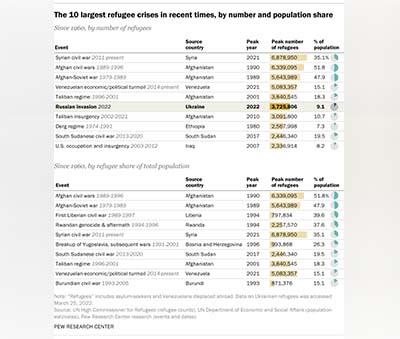 The Center examined all cases in the UNHCR’s database since 1960 where there were at least 500,000 refugees and similarly displaced people from a given country in a given year. The analysis doesn’t include “internally displaced persons” – those who have fled or been forced from their usual homes but haven’t yet crossed an international border. (Earlier this week, UNHCR head Filippo Grandi estimated that, all told,
The Center examined all cases in the UNHCR’s database since 1960 where there were at least 500,000 refugees and similarly displaced people from a given country in a given year. The analysis doesn’t include “internally displaced persons” – those who have fled or been forced from their usual homes but haven’t yet crossed an international border. (Earlier this week, UNHCR head Filippo Grandi estimated that, all told, 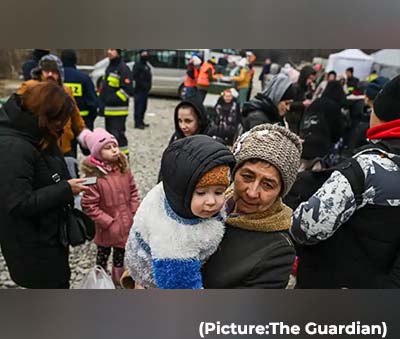 Afghanistan, which has been at war either with itself or with outside forces for more than four decades, has had more than 2 million refugees every year since 1981. The peak year was 1990, after Soviet troops had withdrawn from the country and the USSR-backed government was battling to hang onto power against a coalition of mujahedeen groups. That year, more than half the country’s total estimated population – 6.3 million people – were listed as refugees.
Afghanistan, which has been at war either with itself or with outside forces for more than four decades, has had more than 2 million refugees every year since 1981. The peak year was 1990, after Soviet troops had withdrawn from the country and the USSR-backed government was battling to hang onto power against a coalition of mujahedeen groups. That year, more than half the country’s total estimated population – 6.3 million people – were listed as refugees. As millions of people in Ukraine face hunger and dwindling supplies of water and medicine, I am announcing today that the United Nations will allocate a further $40 million from the Central Emergency Response Fund to ramp up vital assistance to reach the most vulnerable, as we wait for the nations to come.
As millions of people in Ukraine face hunger and dwindling supplies of water and medicine, I am announcing today that the United Nations will allocate a further $40 million from the Central Emergency Response Fund to ramp up vital assistance to reach the most vulnerable, as we wait for the nations to come. Zoltan Pozsar of Credit Suisse said in a report, “We are witnessing the birth of Bretton Woods III – a new world (monetary) order centred around commodity-based currencies in the East that will likely weaken the Eurodollar system and also contribute to inflationary forces in the West.”
Zoltan Pozsar of Credit Suisse said in a report, “We are witnessing the birth of Bretton Woods III – a new world (monetary) order centred around commodity-based currencies in the East that will likely weaken the Eurodollar system and also contribute to inflationary forces in the West.” Journalists who traveled extensively into the Hindi heartland say that they found the voters constantly complaining about lack of jobs, high inflation, cooking gas, petrol prices, and many other issues. But when asked who they would vote for, their choice was unanimous: BJP. What was the rationale? They said that Modi was in for the big fight, so they wanted to support him and his party. What they meant by the big fight was Hindus versus Muslims.
Journalists who traveled extensively into the Hindi heartland say that they found the voters constantly complaining about lack of jobs, high inflation, cooking gas, petrol prices, and many other issues. But when asked who they would vote for, their choice was unanimous: BJP. What was the rationale? They said that Modi was in for the big fight, so they wanted to support him and his party. What they meant by the big fight was Hindus versus Muslims. In fact, the Russians were talking about a hysteria of the West for fear of the annexation of Ukraine which, they said, was never on their mind, but only a fiction of the hysterical minds of the West. And then came the onslaught on Ukraine and the Ukrainians, turning the seeming glimmer of goodness and hope into a lie. And what a lie it was! The reports are that, as I am writing this, over 2 million of Ukrainian refugees have sought refuge in neighbouring countries like Poland, Moldova, Lithuania, Slovakia, Hungary, Romania. Besides, millions of people have been displaced within the country, and they are going about helplessly trying to find a safe place for themselves.
In fact, the Russians were talking about a hysteria of the West for fear of the annexation of Ukraine which, they said, was never on their mind, but only a fiction of the hysterical minds of the West. And then came the onslaught on Ukraine and the Ukrainians, turning the seeming glimmer of goodness and hope into a lie. And what a lie it was! The reports are that, as I am writing this, over 2 million of Ukrainian refugees have sought refuge in neighbouring countries like Poland, Moldova, Lithuania, Slovakia, Hungary, Romania. Besides, millions of people have been displaced within the country, and they are going about helplessly trying to find a safe place for themselves.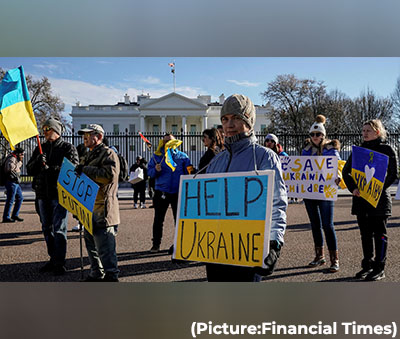 Withdrawal of major Western transnational companies – such as Shell, McDonald’s and Apple – will undoubtedly hurt many Russians – not only oligarchs, their ostensible target.
Withdrawal of major Western transnational companies – such as Shell, McDonald’s and Apple – will undoubtedly hurt many Russians – not only oligarchs, their ostensible target.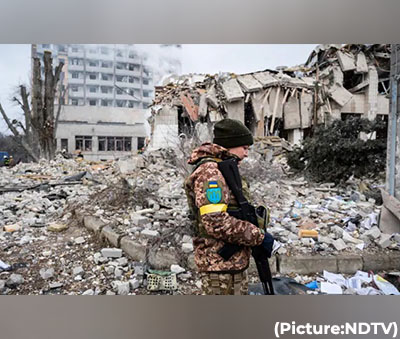 One such resolution was backed by 141 countries, though a Russian diplomat contended that with China and India both abstaining, the critics represented less than half of the global population.
One such resolution was backed by 141 countries, though a Russian diplomat contended that with China and India both abstaining, the critics represented less than half of the global population.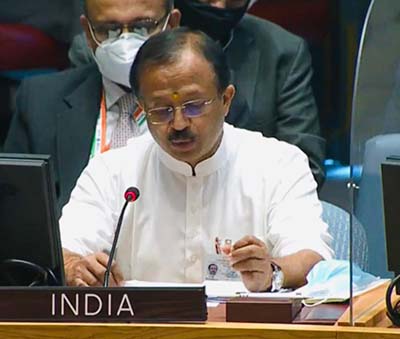 “Let me also state that we condemn all acts motivated by anti-Semitism, Christianophobia or Islamophobia. However, such phobias are not restricted to Abrahamic religions only,” he said.
“Let me also state that we condemn all acts motivated by anti-Semitism, Christianophobia or Islamophobia. However, such phobias are not restricted to Abrahamic religions only,” he said.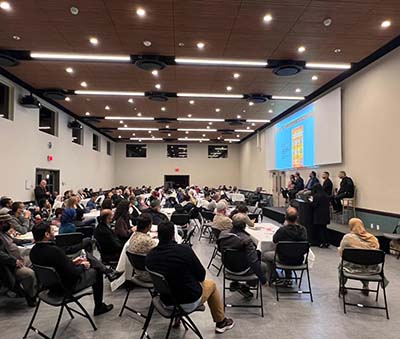 “Hindus everywhere need to stand up and speak up against this really poisonous variant of Hindu nationalism that threatens to destroy not just the wonderful civilization and ethos that is India, but really a lot of communities everywhere in the world,” said Prof. Rohit Chopra, Associate Professor in the Department of Communication at Santa Clara University.
“Hindus everywhere need to stand up and speak up against this really poisonous variant of Hindu nationalism that threatens to destroy not just the wonderful civilization and ethos that is India, but really a lot of communities everywhere in the world,” said Prof. Rohit Chopra, Associate Professor in the Department of Communication at Santa Clara University.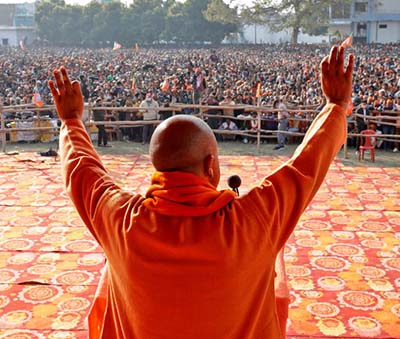 The results also indicate the emphasis on welfare politics in the country. While
The results also indicate the emphasis on welfare politics in the country. While  The city has now been subjected to nine days of heavy bombardment by Russian forces, destroying apartment buildings and flattening residential areas. Footage verified by the BBC showed shelling on Thursday, confirming a statement by the city council that the bombardment was ongoing.
The city has now been subjected to nine days of heavy bombardment by Russian forces, destroying apartment buildings and flattening residential areas. Footage verified by the BBC showed shelling on Thursday, confirming a statement by the city council that the bombardment was ongoing.